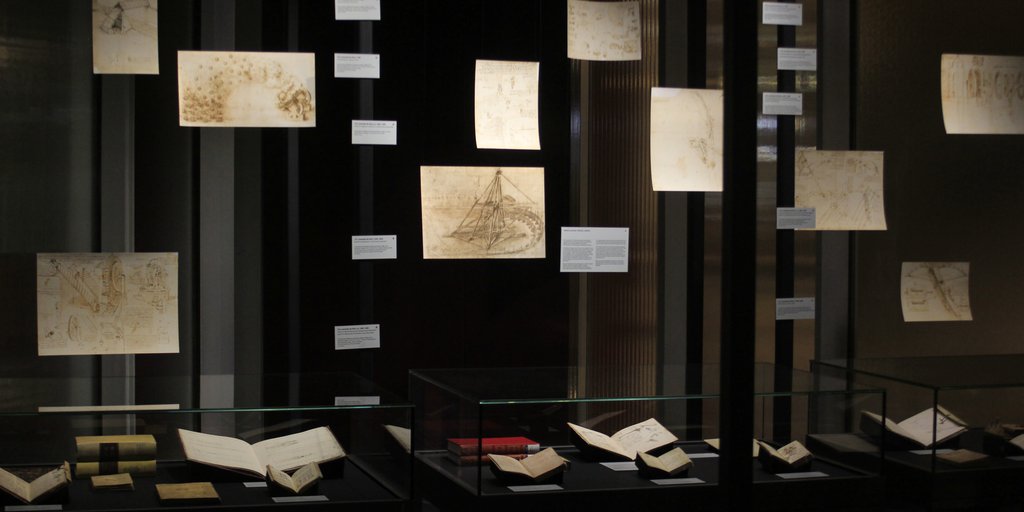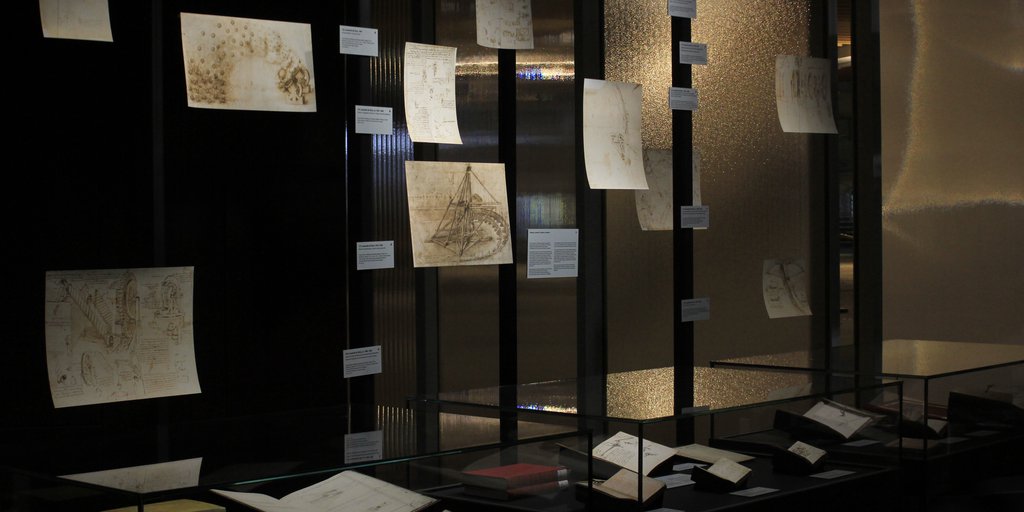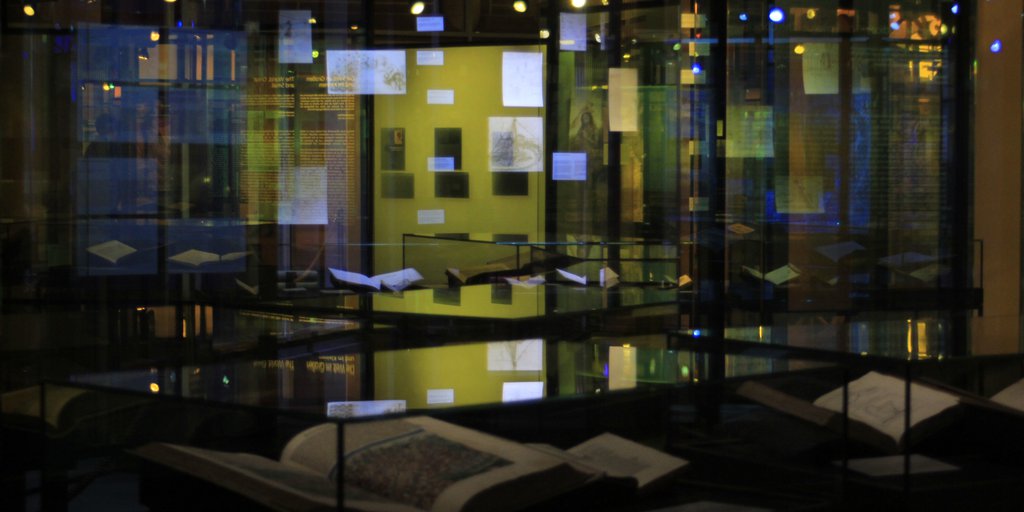
Epilogue: The Codices <
This is a collection without order, compiled from many papers that I have copied here,
hoping to put them in their respective order, according to the subjects they address …
Leonardo da Vinci
Codex Arundel, fol. 1r. Translation: Elizabeth Hughes
Leonardo’s surviving literary estate comprises over 4,000 sheets; a total of 22 volumes of illustrated manuscripts, generally known as codices, still exists today. The material is extremely heterogenous. Alongside pocket-sized sketchbooks with jottings made on the spot purely for his own use, there are large-format clean copies that seem to address an audience. What the volumes have in common is their thematic diversity, and all show traces of continual use and revision. At his death, Leonardo left the volumes to his collaborator and heir Francesco Melzi (1491/92–1567). Melzi’s heirs sold a large part of this legacy to the sculptor Pompeo Leoni (ca. 1533–1608). In 1637 the collector Galeazzo Arconati (before 1592–1649) donated several of these manuscripts to the Biblioteca Ambrosiana in Milan. They ultimately reached Paris as part of Napoleon’s spoils of war where most of them are still kept today—fortunately mostly in their original binding. Other codices took entirely different paths—though under similarly dramatic circumstances.
Codices <
 | 114.
ca. 1505–1506 |

Leonardo was occupied with ideas about the flights of birds and the possibility of humans flying throughout his life. He claimed that while still an infant in the cradle, even before learning the rudiments of reading and arithmetic (16 ■) he remembered an encounter with a kite (nibbio), the bird of prey whose wingbeat and gliding he later studied and sketched in great detail in natural surroundings. He wrote about this in his earliest memoir of childhood (Codex Atlanticus, fol. 186v; analyzed by Sigmund Freud in a famous essay from 1909/10). In the manuscript shown here he transforms his empirical observations into mechanical designs for a flying machine driven by human muscle power (ornithopter), with its flight principle modeled on the skeleton of a bird. Leonardo persisted with his empirical studies on aerodynamics even after the failure of practical trials with the “large bird.”
References
Bambach, Carmen C. 2019. Leonardo da Vinci Rediscovered. Vol. 2: The Maturing of a Genius 1485–1506. 4 vols. New Haven / London: Yale University Press, 161–178, 465–479.
Freud, Sigmund. 2000. Eine Kindheitserinnerung des Leonardo da Vinci. Frankfurt a. M.: Fischer.
Pedretti, Carlo. 1990. I disegni di Leonardo da Vinci e della sua cerchia nella Biblioteca Reale di Torino. Florence: Giunti.
Schapiro, Meyer. 1956. “Leonardo and Freud. An Art-Historical Study.” Journal of the History of Ideas 17 (2): 147–178.











